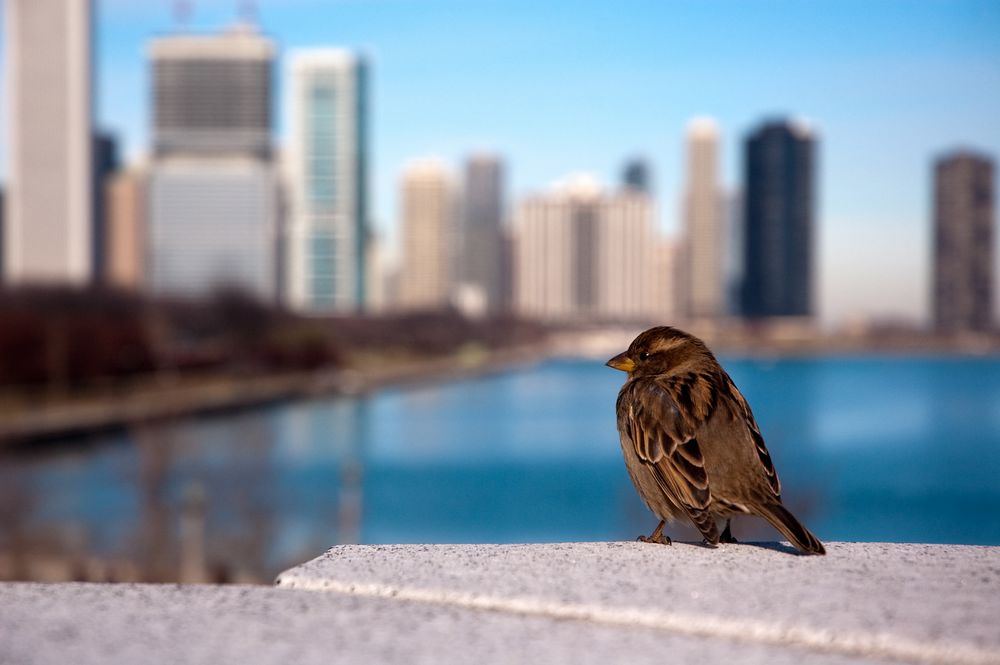Green cities are the last rampart in the disappearance of birds from towns
Public authorities and landscape contractors are in the front line for providing a range of solutions.

Alarm bells are ringing all over Europe! The urban bird population is in freefall! The number of house sparrows, one of the most common species in urban areas, has fallen by 73% in Paris in 13 years, 60% in 20 years in Prague, and 60% in 25 years in Finland (1). All over Germany, bird species fell by 15% (3). Public authorities and landscape contractors are in the front line for providing a range of solutions.

Why the disappearance of birds downtown is a threat
The rarefaction of birds in urban areas is a problem as birds play several crucial roles for the planet and the human race. They are active protectors of biodiversity as they carry seeds far and wide. Some, like jays, stock seeds that otherwise might have been lost or forgotten. Others birds sow by excreting them. And other seeds quite simply cling to birds before falling off.
Insectivorous birds also play a significant role in the ingestion of insects harmful to man and plants! Titmice savour the processionary caterpillars in pine trees which cause allergies and kill many trees. Swallows will eliminate tiger mosquitoes, which transmit dengue fever, chikungunya and the zika virus. For public health, public authorities and landscape contractors may find it interesting to integrate urban bird preservation into their designs for green spaces and landscaping projects.
3 steps to reverse the trend: a solution for each problem!
To counter this phenomenon, it is vital to determine the root cause and apply the right solution. Although the causes are many and varied, there are three major problems within the purview of landscape contractors.
1. The lack of suitable buildings
In today’s buildings there is nowhere to nest. New buildings often have smooth surfaces such as glazed walls, with no nooks and crannies for birds to perch. When old buildings are restored the holes for birds’ nests are usually plugged to improve thermal insulation, without providing alternative solutions.
Public authorities could design more suitable buildings, for example by installing nesting boxes or integrating green walls. The walls could also be used to trap air pollution, one of the other consequences of the rarefaction of birds downtown.
2. The disappearance of insects
Caused by the lack of biodiversity and the use of plant health products such as neonicotinoids, the disappearance of insects is a true headache for public authorities. A German study recently stated that over 75% of insects disappeared over the last 27 years (3), negatively impacting the insectivorous bird population!
Fortunately, many landscaping experts have introduced innovative landscaping planning to bring insects back to our cities. Inventions include insect hostels, hives and flower bowers rich in nectar sources. Authorities and landscape contractors are free to act on their own scale and within their own budget. Lastly, the use of Biocontrol products should be adopted by all. Some countries like France have already prohibited the use of neonicotinoids.
3. The lack of sustainable gardening
The majority of urban green spaces were designed to be managed in exactly the same way which has led to green spaces with low biodiversity. This kind of management only enables some species of birds to live there. In fact the number of original species has fallen by half downtown vs. the peripheral region, according to a study by Ecology Letters (4).
Differentiated management makes it possible for each space to be perceived in its individuality and maintained in consequence - this is something very new in green space design! Introducing biodiversity will attract insects and also provide new refuges for birds. Several species of plants can cohabit, create ground-level vegetation, provide sand to help birds wash. It is preferable to stop pruning and clearing undergrowth during nesting periods. As for “weeds”, it is sometimes better to leave them in peace as they also have a role to play!
Transforming an urban area into a green city to create a good environment for birds often solves both problems. Some big metropolises, like Vancouver (Canada), have even developed a dedicated strategy to increase their bird population! So why not make your city “bird-friendly” too?
(1) Corif: Enquête Moineaux domestiques à Paris
(2) Nabu: Über zwölf Millionen Vogelbrutpaare weniger in Deutschland
(3) Plos One: More than 75 percent decline over 27 years in total flying insect biomass in protected areas
(4) Ecology Letters: Urbanisation and the loss of phylogenetic diversity in birds
Photo credit: bryndin / stock.adobe.com
Icons : Icons8

